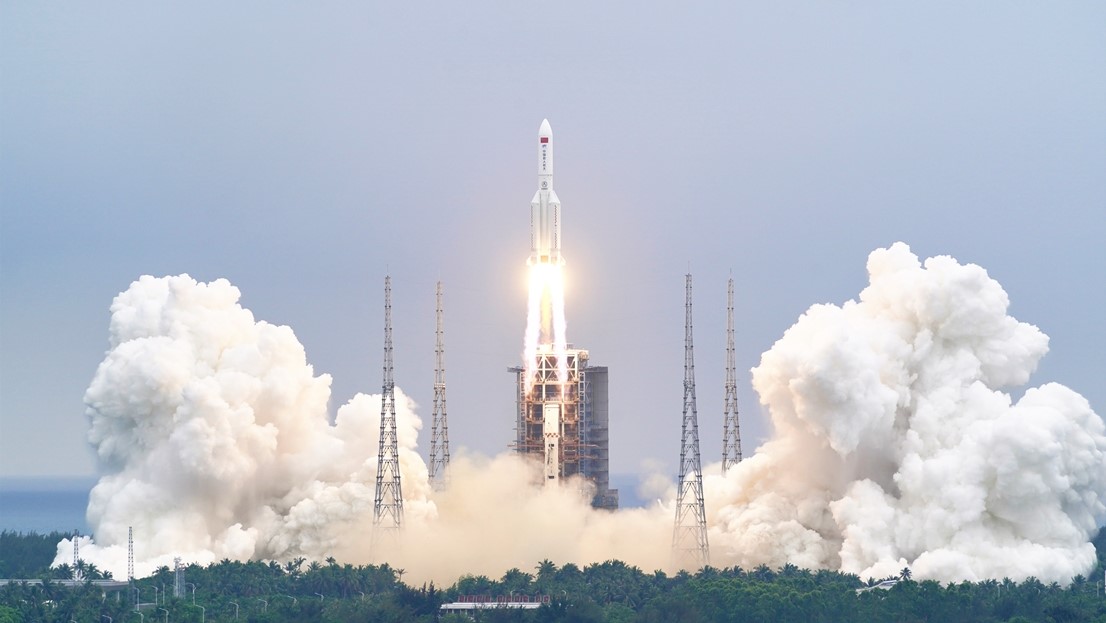Launch like Starship? China considers fully reusable heavy-lift rocket: report
The fully reusable variant could be ready by 2035.

China is considering developing a fully reusable Long March 9 megarocket variant in the aftermath SpaceX's Starship, a media report suggests.
The Long March 9 would use the same fuel (methane-liquid oxygen, or methalox) as SpaceX's Starship, which is tasked for deep-space missions and NASA's human moon landings. The two designs share heavy-lift capabilities and fuel types, but beyond that their structure is wildly different. For example, Starship can do in-air flips during landing.
The new Long March 9 design was revealed in a Chinese-language public lecture (available here) by Long Lehao, a chief designer of the Long March rocket series, according to SpaceNews. The variant may fly as soon as 2035.
China's government has been working on the Long March 9 for operational use in 2030, in large part to build out China's and Russia's International Lunar Research Station. But the country revealed a concept so different that the new Long March 9 fully reusable variant would be a "dramatic departure" from another version presented last year, which included only a reusable first stage, SpaceNews wrote.
"The frequent change in concepts ... suggests China’s plans are somewhat in flux," the report added.
Related: China launches Long March 8 rocket on debut flight, plans for reusable booster
The two-stage reusable variant of Long March 9 would use 26 methalox engines in the first stage and would have the capacity to carry 150 tons to low Earth orbit, 65 tons to geosynchronous transfer orbit or 50 tons to the moon via trans-lunar injection, SpaceNews said.
Get the Space.com Newsletter
Breaking space news, the latest updates on rocket launches, skywatching events and more!
China has launched more than 400 missions to date, the bulk of those powered by the Long March rocket family.
The most famous current variant is the Long March 5/5B series, known for launching missions such as China's first interplanetary mission and the Tianhe 1 space station core module. (The core stage of the massive Long March 5B has fallen uncontrolled back to Earth after both of its launches, to international condemnation from space debris trackers.)
The Long March 8 family, which has two missions under its belt so far and is also pursuing reusability like Long March 9, may eventually be able to land like SpaceX's Falcon 9, but it is based on a kerosene fuel mix.
Related: China lays out ambitious space plans for next 5 years

That said, the methalox design proposed for Long March 9 is feasible, SpaceNews said, as the China Aerospace Science and Technology Corporation has been working on methane engines for a while.
The move would also bring China in line with U.S. companies like SpaceX, Blue Origin and United Launch Alliance, which are all pursuing the methalox mix for increased performance and fewer environmental issues from soot.
SpaceNews noted that Chinese commercial launch companies Landspace and iSpace have also been developing methalox launchers and have potentially been working with the Chinese government, which would produce another potential pathway to methalox use by Chinese missions.
In February, the Chinese government also showcased a potential two-stage methane-liquid oxygen rocket that appears to be closely aligned with Starship's design.
Follow Elizabeth Howell on Twitter @howellspace. Follow us on Twitter @Spacedotcom and on Facebook.
Join our Space Forums to keep talking space on the latest missions, night sky and more! And if you have a news tip, correction or comment, let us know at: community@space.com.

Elizabeth Howell (she/her), Ph.D., was a staff writer in the spaceflight channel between 2022 and 2024 specializing in Canadian space news. She was contributing writer for Space.com for 10 years from 2012 to 2024. Elizabeth's reporting includes multiple exclusives with the White House, leading world coverage about a lost-and-found space tomato on the International Space Station, witnessing five human spaceflight launches on two continents, flying parabolic, working inside a spacesuit, and participating in a simulated Mars mission. Her latest book, "Why Am I Taller?" (ECW Press, 2022) is co-written with astronaut Dave Williams.









